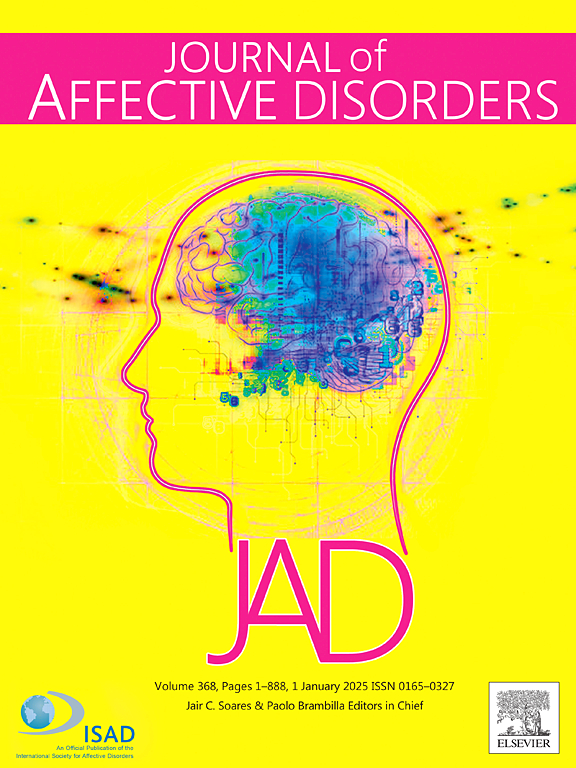Clinical phenotypes of female depression and age at menarche: Analysis of data from NHANES 2005–2020
IF 4.9
2区 医学
Q1 CLINICAL NEUROLOGY
引用次数: 0
Abstract
Background
Depression exhibits a high prevalence among females, with its heterogeneity contributing to various phenotypes. Reproductive status is a pivotal determinant in the etiology and progression of female depression. However, the characteristics of depression associated with female reproductive have been insufficiently explored.
Methods
A cohort of 15,602 adult females, derived from the National Health and Nutrition Examination Survey spanning 2005 to 2020, was subjected to analysis following data screening. This study utilized data encompassing reproductive status, Patient Health Questionnaire (PHQ) scores, cognitive function assessments, estrogen levels and thyroid profiles. Latent class analysis was employed to identify the clinical subtypes of female depression.
Results
Females in the early menarche group exhibited higher depressed scores compared to those in non-early menarche group (P < 0.001). A final model with three latent classes was determined to be optimal. Key distinguishing characteristics across identified classes included the menarche age, symptom severity, cognitive function, and levels of thyroxine hormones. Women in Class 3 had the most severe symptoms, and they experienced menarche at the earliest age, poorest cognitive performance and lowest free thyroxine and higher thyroglobulin (all P < 0.05, Bonferroni correction).
Conclusions
Female depression appears to encompass a range of distinct phenotypes. The menarche age may serve as a significant marker for future sex-specific biological and genetic studies pertaining to female depression subtype. To comprehensively decipher the biomarker profiles associated with depression subtypes, further investigation into reproductive-related factors is essential.
女性抑郁症的临床表型与月经初潮年龄:NHANES 2005-2020数据分析
背景:抑郁症在女性中表现出很高的患病率,其异质性导致了不同的表型。生殖状况是女性抑郁症的病因和进展的关键决定因素。然而,抑郁症与女性生殖相关的特征尚未得到充分的探讨。方法:从2005年至2020年的全国健康与营养检查调查中获得15,602名成年女性,对其进行数据筛选分析。本研究使用的数据包括生殖状况、患者健康问卷(PHQ)评分、认知功能评估、雌激素水平和甲状腺特征。采用潜在分类分析确定女性抑郁症的临床亚型。结果:初潮早期组的女性比初潮非早期组的女性表现出更高的抑郁评分(P 结论:女性抑郁症似乎包含一系列不同的表型。月经初潮的年龄可以作为一个重要的标志,为未来的性别特异性生物学和遗传学研究有关的女性抑郁症亚型。为了全面破译与抑郁症亚型相关的生物标志物谱,进一步研究生殖相关因素是必要的。
本文章由计算机程序翻译,如有差异,请以英文原文为准。
求助全文
约1分钟内获得全文
求助全文
来源期刊

Journal of affective disorders
医学-精神病学
CiteScore
10.90
自引率
6.10%
发文量
1319
审稿时长
9.3 weeks
期刊介绍:
The Journal of Affective Disorders publishes papers concerned with affective disorders in the widest sense: depression, mania, mood spectrum, emotions and personality, anxiety and stress. It is interdisciplinary and aims to bring together different approaches for a diverse readership. Top quality papers will be accepted dealing with any aspect of affective disorders, including neuroimaging, cognitive neurosciences, genetics, molecular biology, experimental and clinical neurosciences, pharmacology, neuroimmunoendocrinology, intervention and treatment trials.
 求助内容:
求助内容: 应助结果提醒方式:
应助结果提醒方式:


